Join the visit of our Technology Expert Santeri Saarinen to Barcelona! Here he recounts the visually rich details of the event and his impressions of the technology exhibits, as well as his personal experiences on the trip! The article consists of four parts, read on to find out about Day 1!
You can also already find the highlights for Day 2, Day 3 and Day 4!
Text and images by Santeri Saarinen
It has been two weeks since Mobile World Congress 2024 ended in sunny Barcelona. After taking in more information in one week than one person is able to process in a month, I’ve finally arrived at a conclusion for the trip. It was well worth it. For a first-timer, MWC was something I could easily recommend to anyone working in the tech industry. Though bring a friend or two, alone it will be impossible to see, hear and experience everything interesting. Make notes and compare them in the evening in a local restaurant (while complaining about the weird eating schedule of Spain, we Finns require lunch at 11:30 and dinner at 18:00).
Arriving on Saturday, I had a nice free day on Sunday to walk around the city and enjoy the views and a beer at the port. Strolling along Las Ramblas is a great way to relax and gather one’s strength before the week of the event.
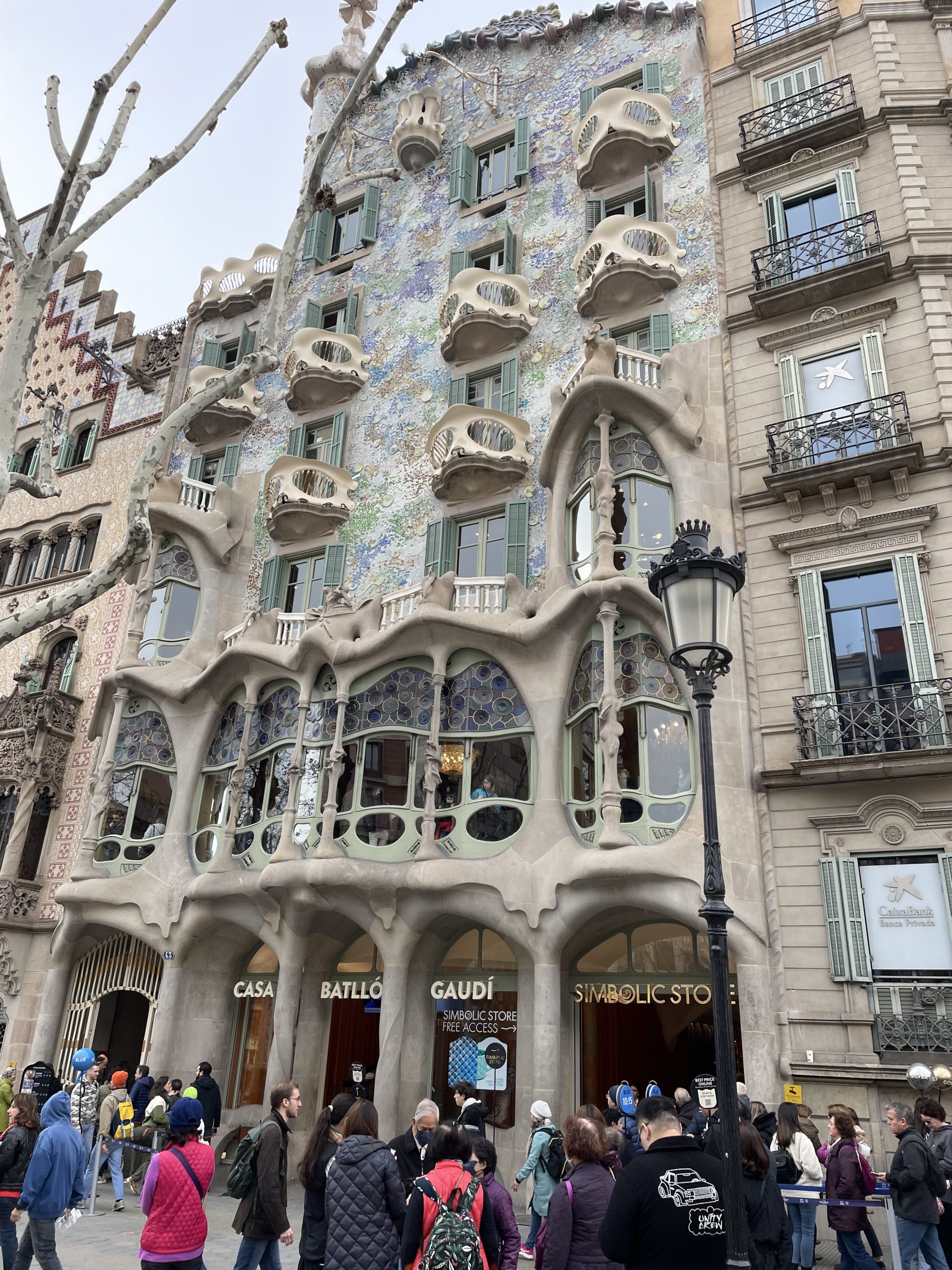
Casa Batllo

Catedral de Barcelona
Day 1 – The Rise of AI and a Dead Metaverse
Early breakfast, walk to the metro station, and we’re off. The exchange at Collblanc was interesting, to get the following line, we had to go down five sets of escalators, extremely deep underground. I could immediately feel the event starting, looking at people around me, lining up at the stairs, squeezing in the metro just so they don’t have to wait an extra five minutes. And the exhilaration after arriving at Fira and slowly surfing the wave of people towards the entrance.
After getting my badge, there was 45 minutes before the first keynote starting. I assumed I’d have plenty of time to look around. But that was not to be. The size of the place was not that apparent from the outside, and after taking my jacket to the coat racks, I ended up having to rush through five different halls towards the main stage. But that was a good choice, I arrived with some time to spare and snatched up a good seat.
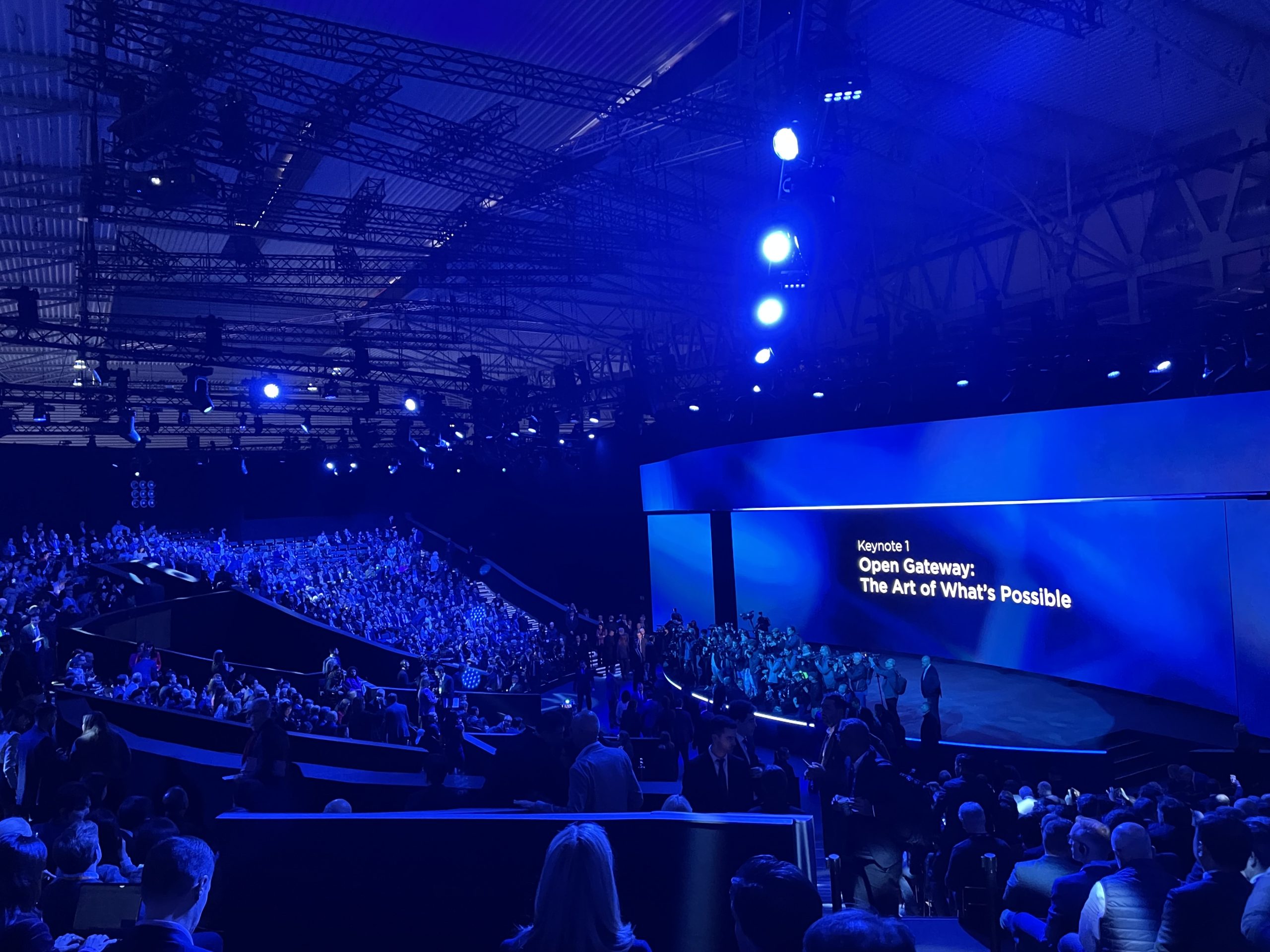
Keynote 1 ready to begin, photographers gathered to get a picture of the national leaders joining the audience.
The first keynote centered around collaboration and the future of the industry. Director General of GSMA, Mats Granryd presented his GOAL for the upcoming year. G for Growth, O for Open Gateway, A for Align and L for Leave no one behind. With speakers from around the world, it was great to see companies like Telefonica, Vodafone, China Mobile, Orange and Microsoft unite with the aim of utilizing common tools and standards. It was not all fun and games though, and the speakers nicely brought up also several issues the could hinder the development and use of Open Gateway, such as the need for investment, especially outside of US and East Asia; and the regulatory labyrinth that telecommunications (and other related fields) are currently in. There needs to be one common set of regulations if we want true interoperability.
With speakers from around the world, it was great to see companies like Telefonica, Vodafone, China Mobile, Orange and Microsoft unite with the aim of utilizing common tools and standards.
Between the keynotes and other presentations, there was some free time to roam around the area. First hours went by fast, just for trying to take in the massive size of the event, and trying to figure out which order to visit interesting companies.
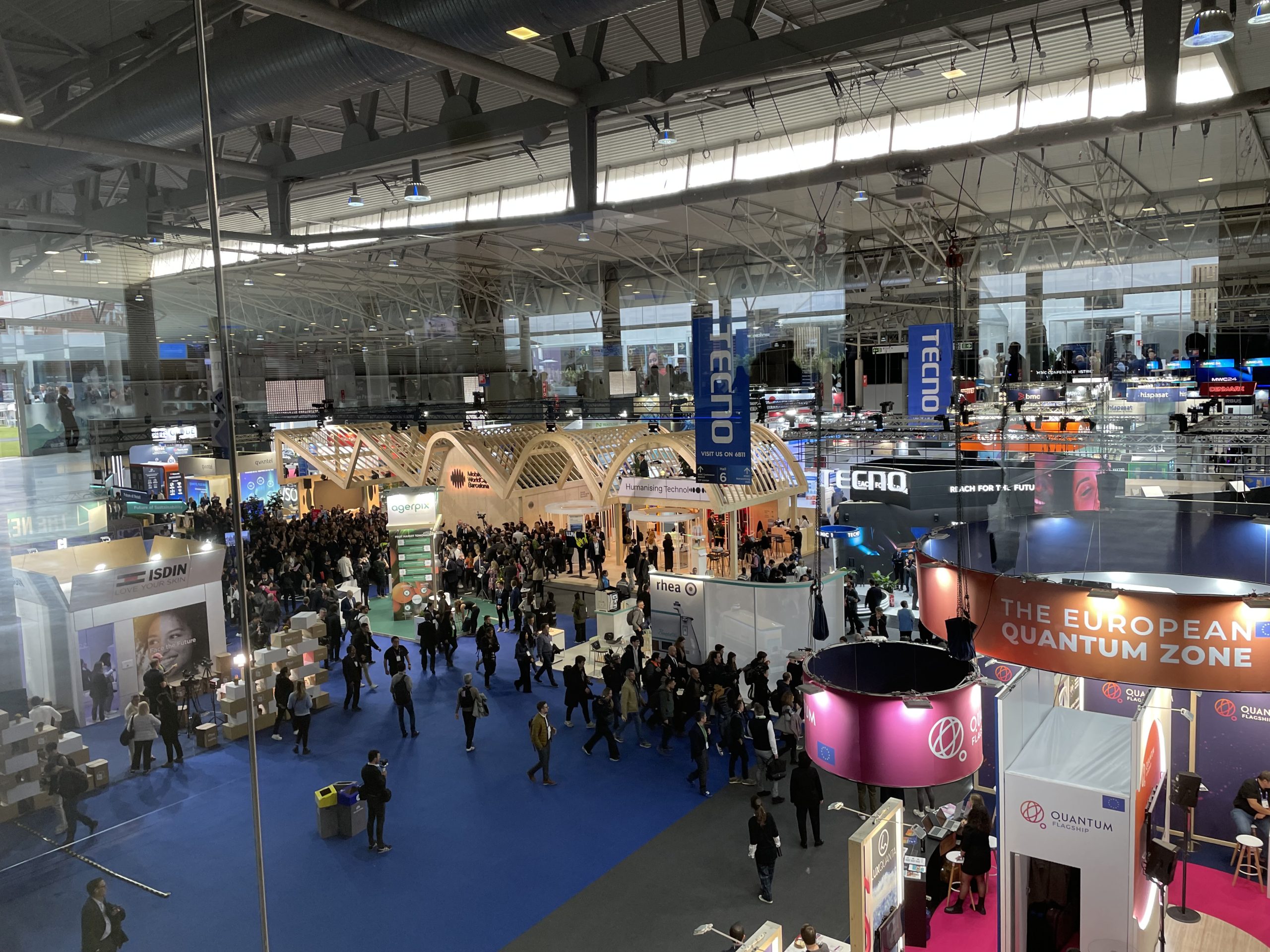
View of Hall 6, Dominated by Mobile World Capital Foundation and Tecno.
Deutsche Telekom was already preparing for the UEFA Euro Championship in Germany next Summer. Though I guess their engineers aren’t too familiar with football, as their game of shooting targets was controlled by hands instead of feet. They should’ve borrowed the trackers from HT Vive’s stand, where you could try out how well their new Vive Ultimate Trackers could track users feet, for example. Feet or no feet, both were great fun, and a lighthearted start to the event. Deutsche Telekom also presented interesting new concepts for mobile phones, where lot of the activity was handled or assisted by AI. This felt like something that should be reality very soon.
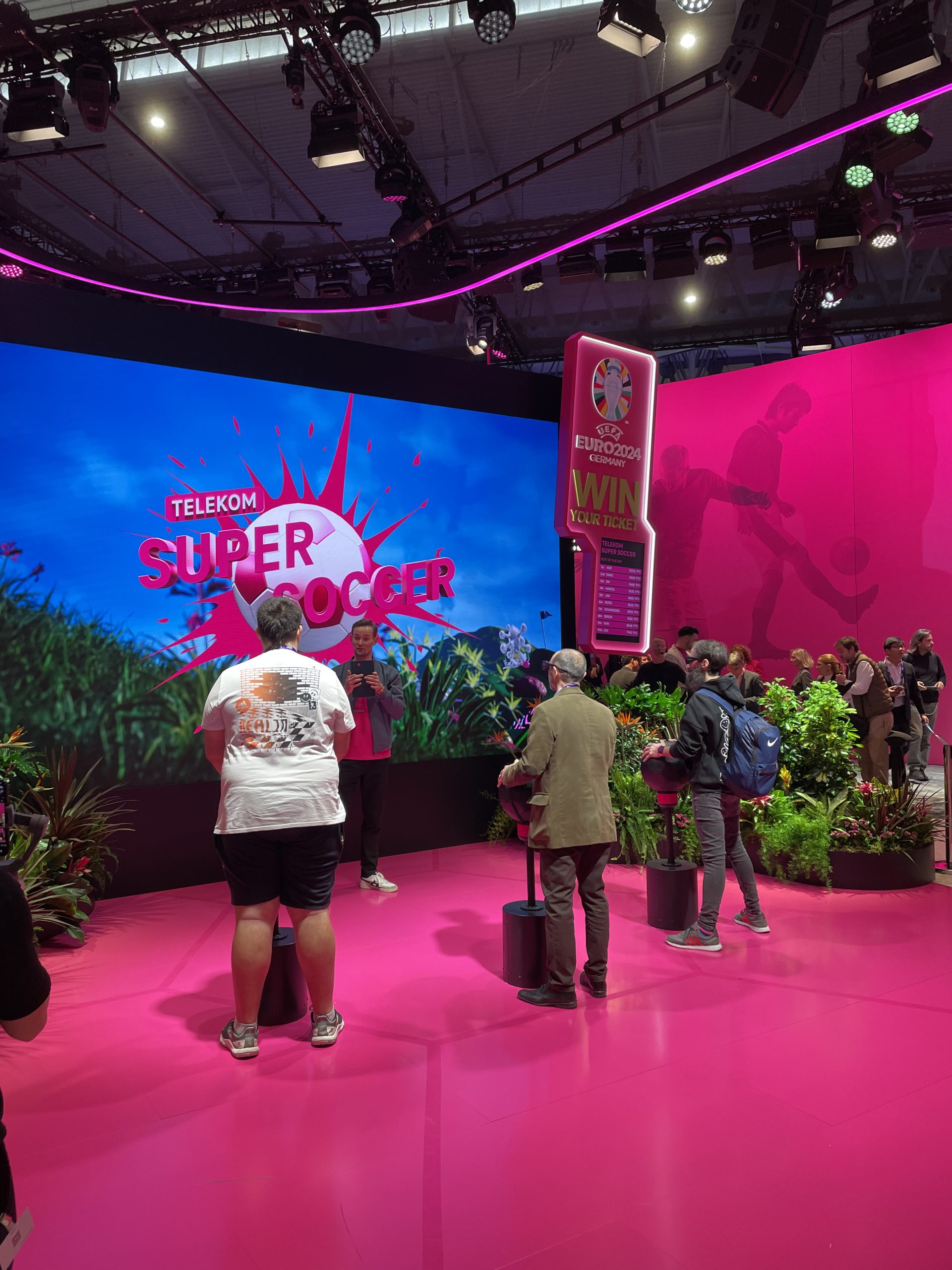
UEFA Euro Championship game by Deutsche Telekom
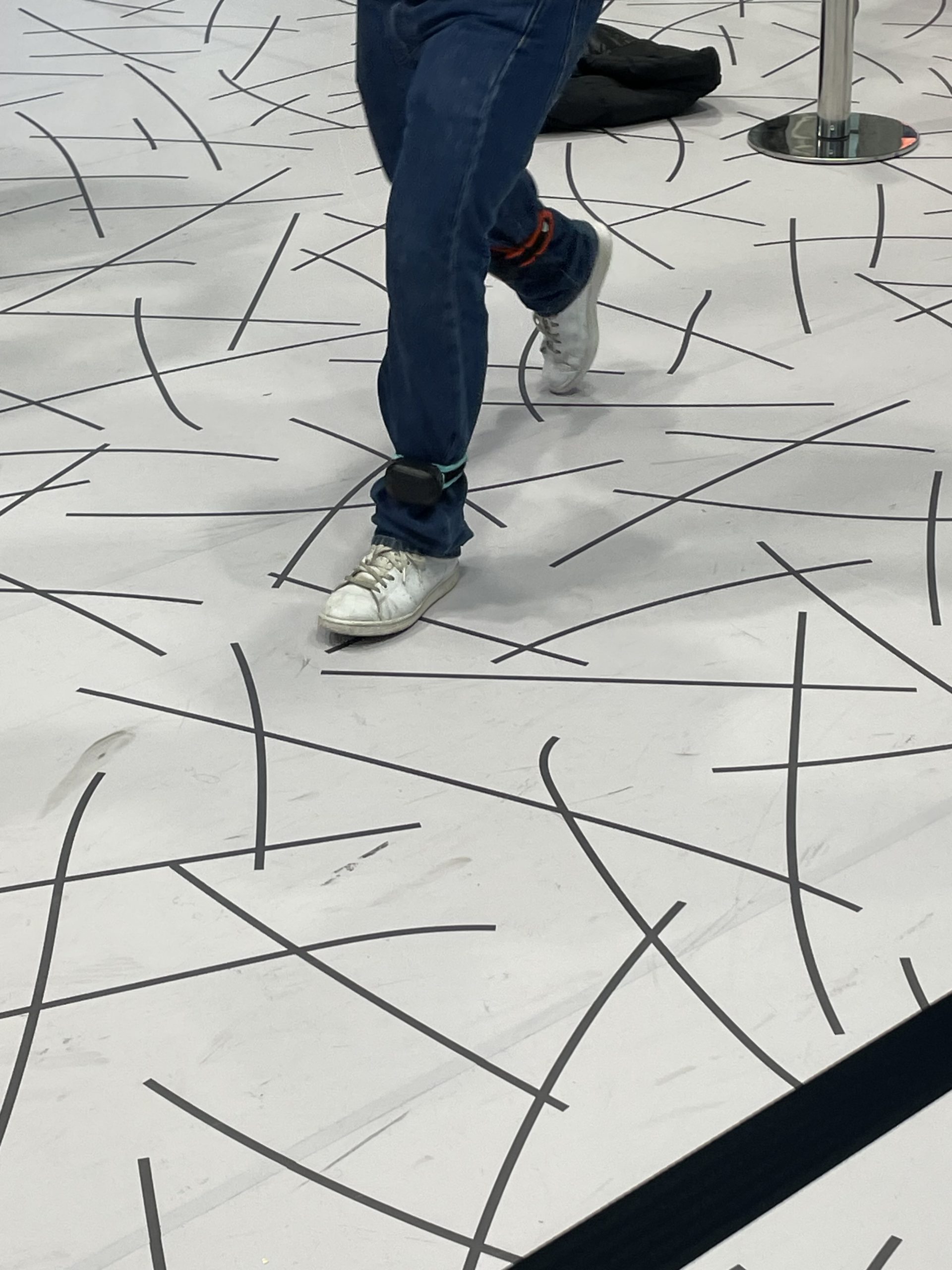
Vive Ultimate Trackers
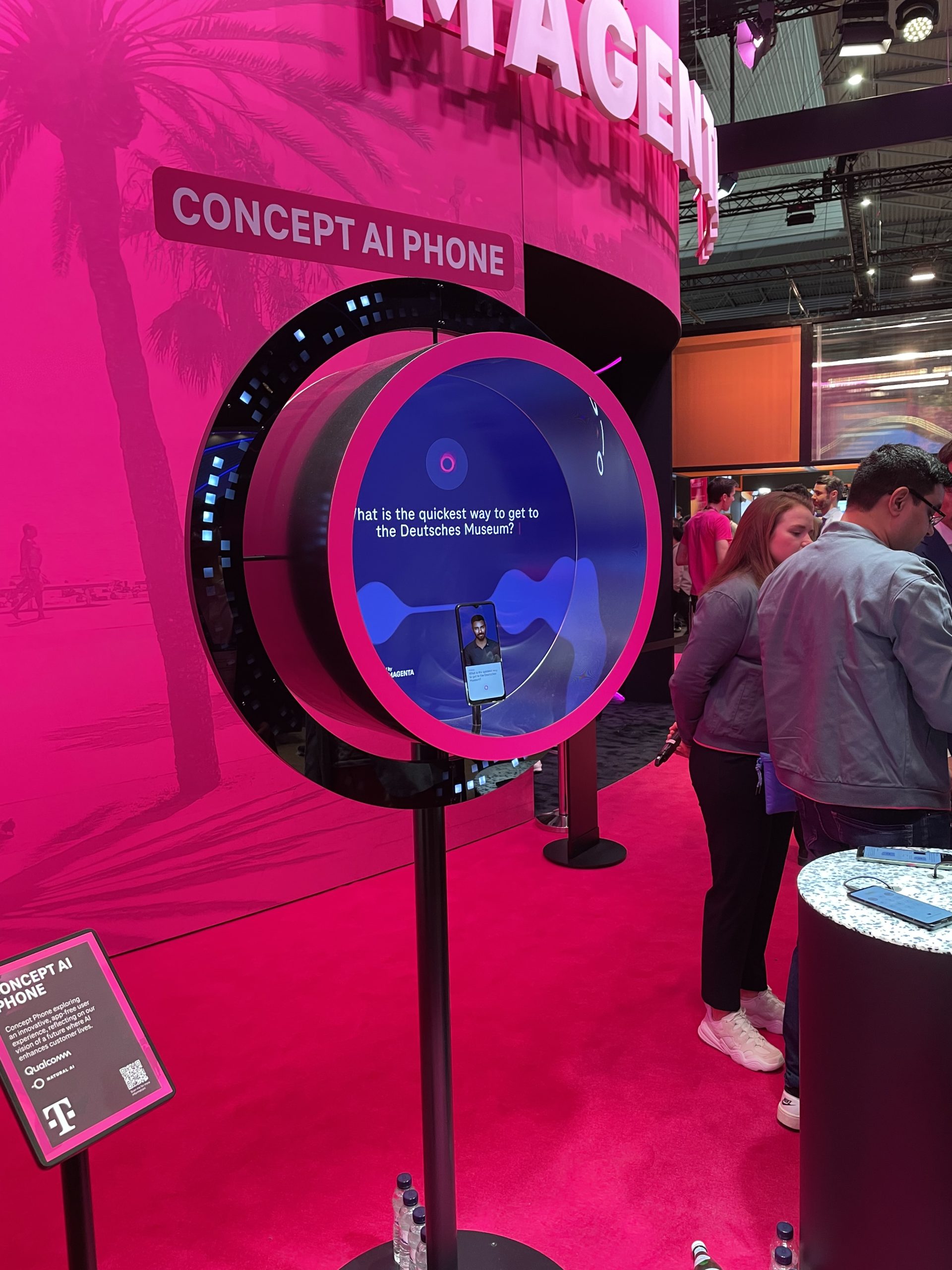
AI Concept Phone by Deutsche Telekom
One of the most interesting talks on the first day was Steven Levy interviewing Demis Hassabis, CEO of Google DeepMind and the original developer of AlphaGo. Their discussion on AI and what it means for AI to be intelligent. For a long time, the goal has been to develop Artificial General Intelligence or AGI, which can mimic human cognitive capabilities and complete wide range of varied tasks.
But it is worth asking the question, if we should still use human brain as an example when researching AI. And what happens when humans can’t understand the solutions an AI agent is providing? The examples of AI processing vast amounts of data and find solutions that would take humans years of work are numerous, i.e. what AlphaFold does with protein folding, or what Isomorphic Labs are doing with drug discovery and chemical compounds.
But it is worth asking the question, if we should still use human brain as an example when researching AI. And what happens when humans can’t understand the solutions an AI agent is providing?
Demis’ solution for the problem of understanding is simple. If you don’t understand what AI is discovering, use LLM and ask the AI to explain the solution. The sudden rush to use ChatGPT was much larger and faster than expected. It seems the general population was ready to use an AI tool for general tasks, if it is not flawless. At the Hassabis presented their work with GEMINI, which uses multiple data sources, and not just text to learn. It seems to be very good with general descriptions on a universal level, but with narrow, accurate facts, it still struggles. Though Hassabis promised it will be Fixed Soontm.
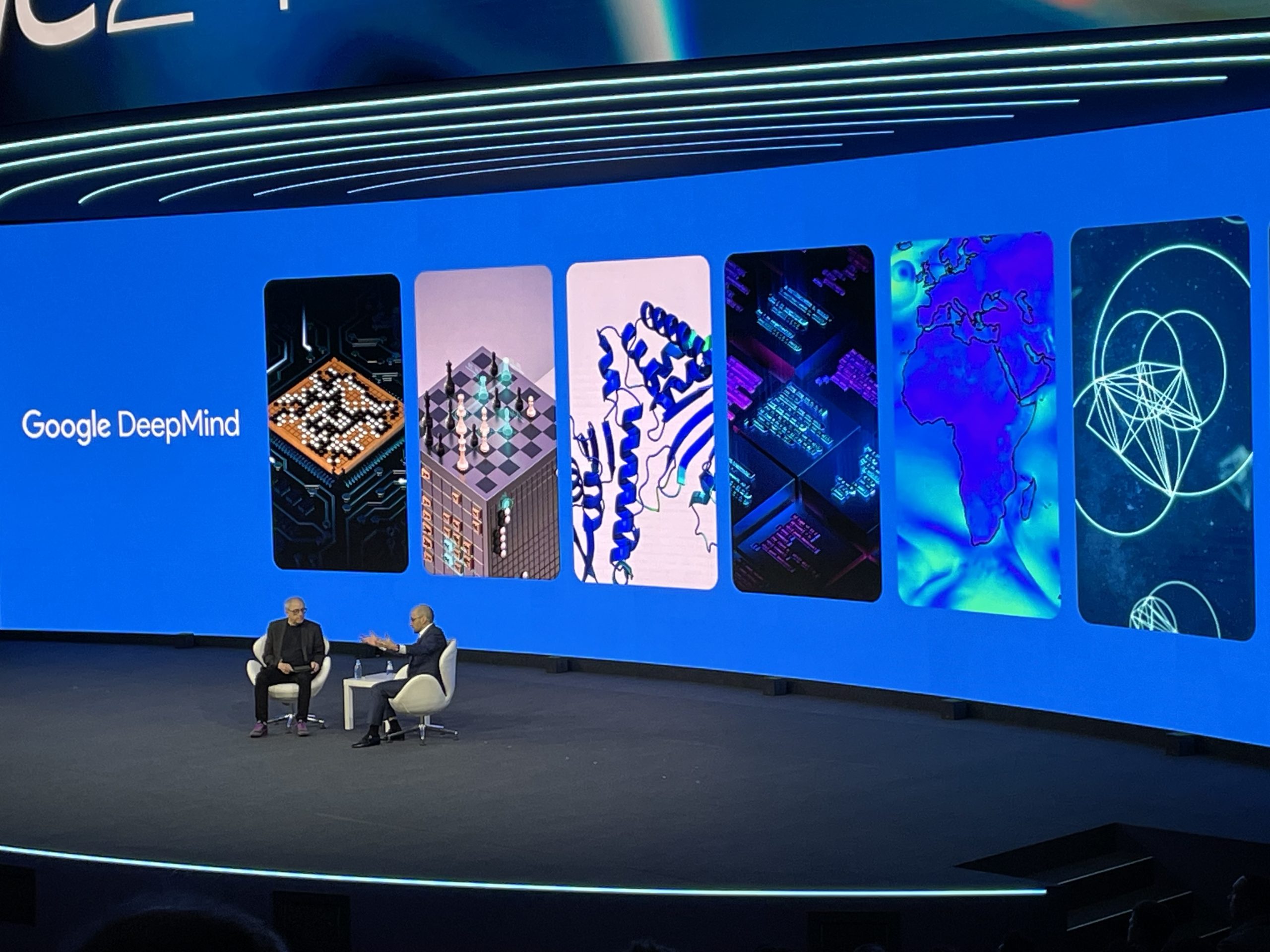
Steven Levy and Demis Hassabis discussing Google DeepMind
One of the most striking pieces of equipment present was SK Telecom’s UAM: Urban Air Mobility prototype of Air Taxi. It offers extremely fast transport with vertical take off and landing, and safe flight in urban areas. Currently they still require a pilot for safe operation, but the goal is to make it completely autonomous. Unfortunately, at the time of visit, only VIPs were invited to join the ride, so I’ll have to wait until they become available in Europe.
Mobile World Congress is a great place to see what kind of focus different countries have. Finland of course had its own collective booth with around 20 companies showing what Finland has on offer. Interesting solutions by companies such as Noccela, Netradar, Aava Mobile, Wirepas and SeeTrue Technologies, with whom we’ve collaborated in the past. Their eye-tracking technology worked excellently, and I’m looking forward to their future implementations.

SK Telecom’s UAM: Urban Air Mobility
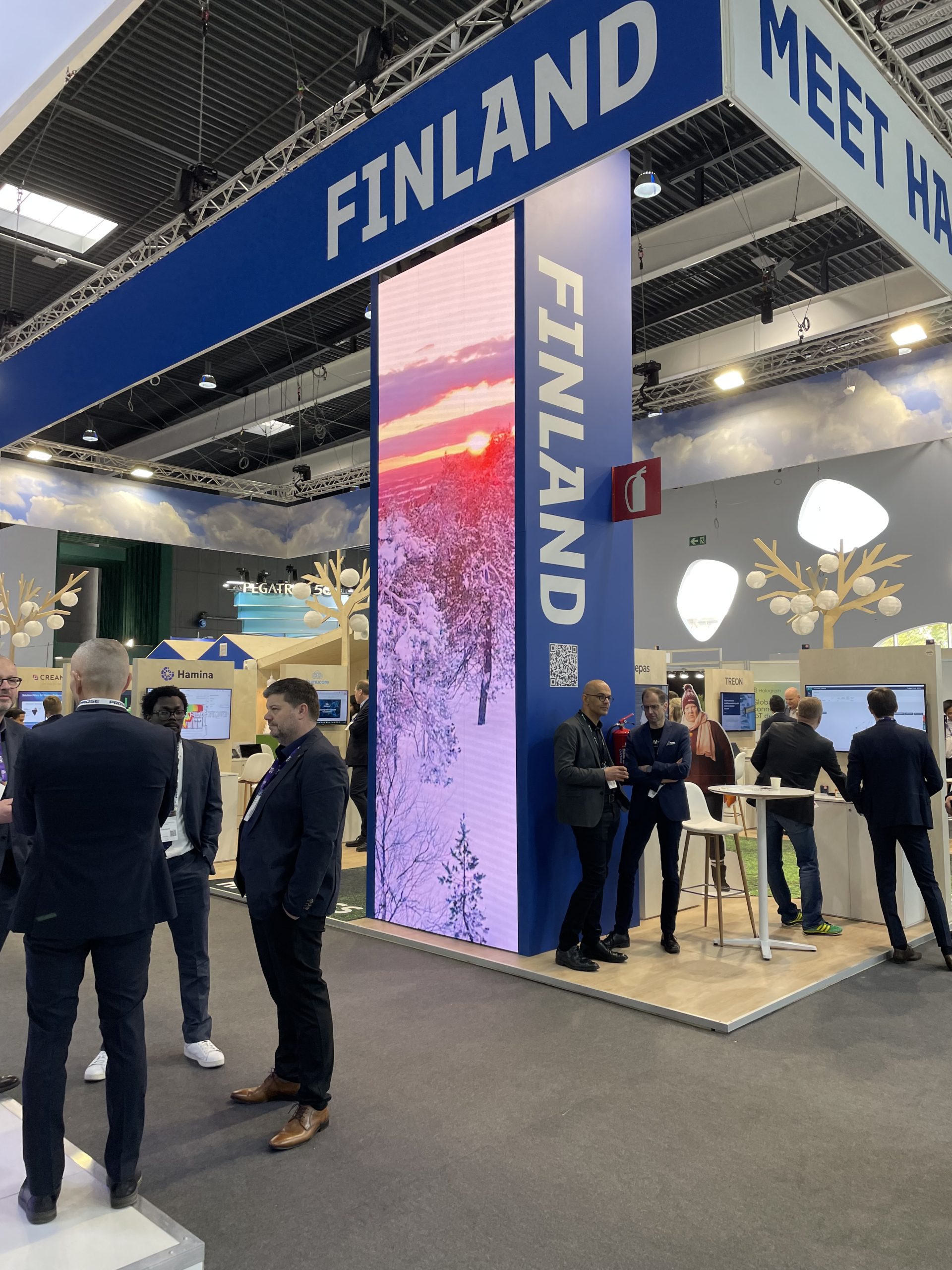
The Finnish booth at MWC
Or course, in an event like this, your bound to miss something extremely interesting. But for the end of Monday, the schedule choices seemed a bit weird. On one stage we had Sabri Albreiki of e& International, Bob Titus of Netcracker and Leslie Shannon of Nokia discussing the impact and use cases of XR technology. While in the next hall we had Muki Kulhan moderating a panel discussion with Amy Peck from EndeavorXR, Cai Felip from Union Avatars and Said Bakadir from Qualcomm on the topic of whether the Metaverse is dead or not. As a proponent of the non-dead Metaverse, I had to hear them out. Hopefully I have chance hear Sabri, Bob and Leslie another time, and if not, I can at least Leslie’s book Virtual Natives.
Back to the Metaverse. Amy Peck nicely described it as the convergence of tech, a place where art, entertainment, games, social media and fashion are colliding. But she wasn’t fan of the word Metaverse and would prefer not to use it. I’d have to disagree here. It becomes impossible to talk about something if you done have a term for it. The tech stack around metaverse is so wide, that we can’t just list all of the things every time, we need something that covers them all for easier understanding. Or would you prefer that a company is developing extended reality, 5G, IoT, digital twin, blockchain, GenAI solutions; or that they just create metaverse solutions. I know which one sounds easier to me buy, sell and explain. Immersive tech has been thrown around as a replacement, but I feel that doesn’t really cover all of the tech required, such as 5G, edge computing or IoT.
Amy Peck from EndeavorXR nicely described the Metaverse as the convergence of tech, a place where art, entertainment, games, social media and fashion are colliding. But she wasn’t a fan of the word Metaverse and would prefer not to use it. I’d have to disagree here. It becomes impossible to talk about something if you don’t have a term for it.
Cai Felip and Said Bakadir had also great points regarding avatars, and how we need to be able to express ourselves virtually, but with several modes. In virtual business meetings, we need a realistic, trustworthy avatar. When going to virtual bar, we could experiment a bit more. This means that interoperability of avatars has to follow these guidelines. We can’t just pop in any avatar that the user has brought from another virtual world. It has to fit the style. As such, we need tools, genAI or otherwise, that transform or modify our avatars to be compatible with the style of the world, but still ours, the way we want them.
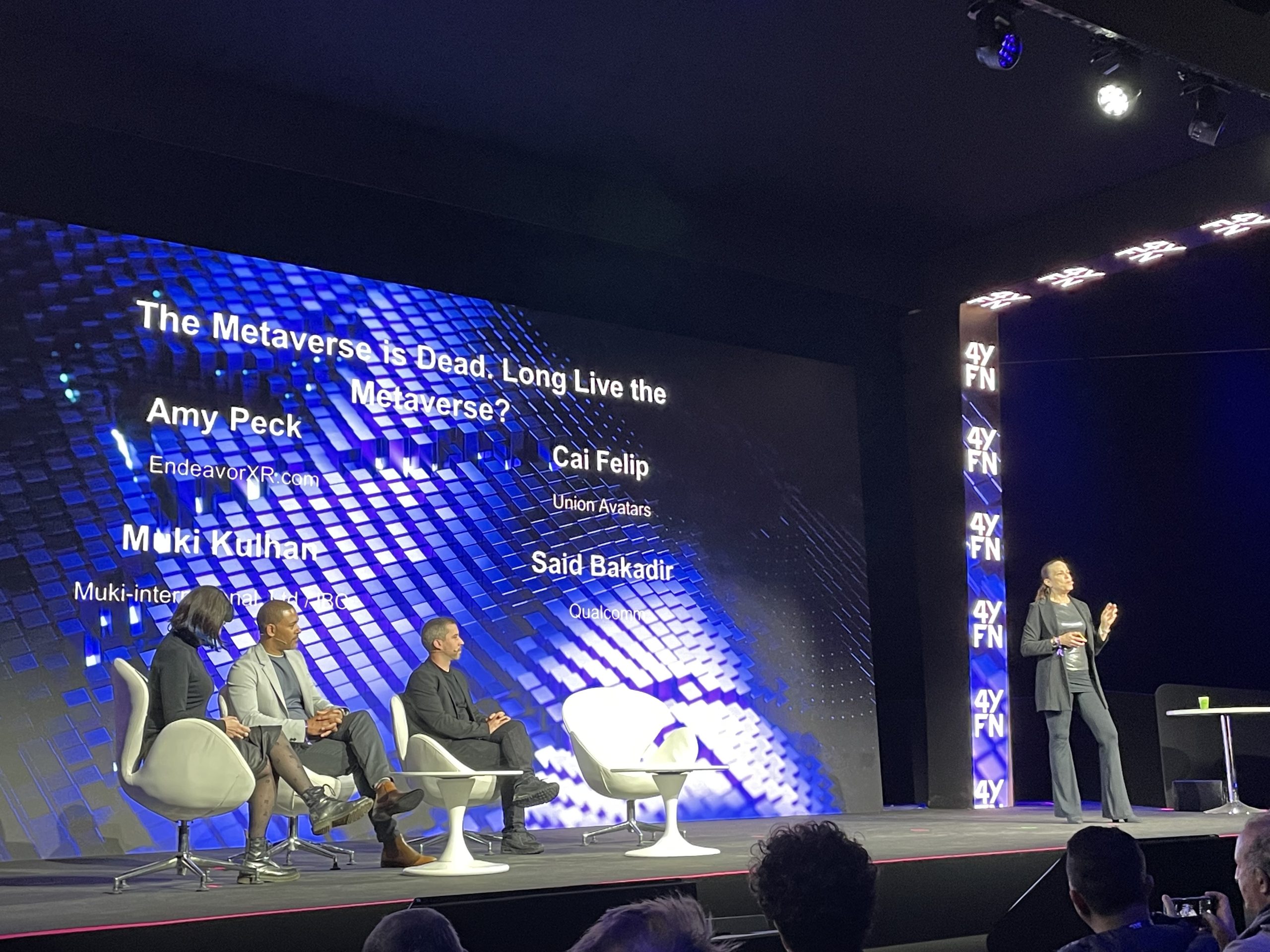
Amy Peck starting the panel discussion on metaverse’s vital status

Mudra Band for Apple Watch
We also saw some interesting gesture control systems at MWC. Mudra Band showcased their neural wristband for Apple Watch, which allows user to Apple devices with finger and hand gestures based on the neural signals from their wrist. Our Finnish friends at Doublepoint demoed their IMU-based solution at the event as well. Their solution works similarly with smart watches, and allows user to use simple finger taps to control their software in many use cases. Excellent for solutions where you don’t want utilize any additional controllers and need your hands for something else.
Find more of our news in the News section.
Follow us on social media for more posts: Facebook | LinkedIn | Twitter | Instagram
